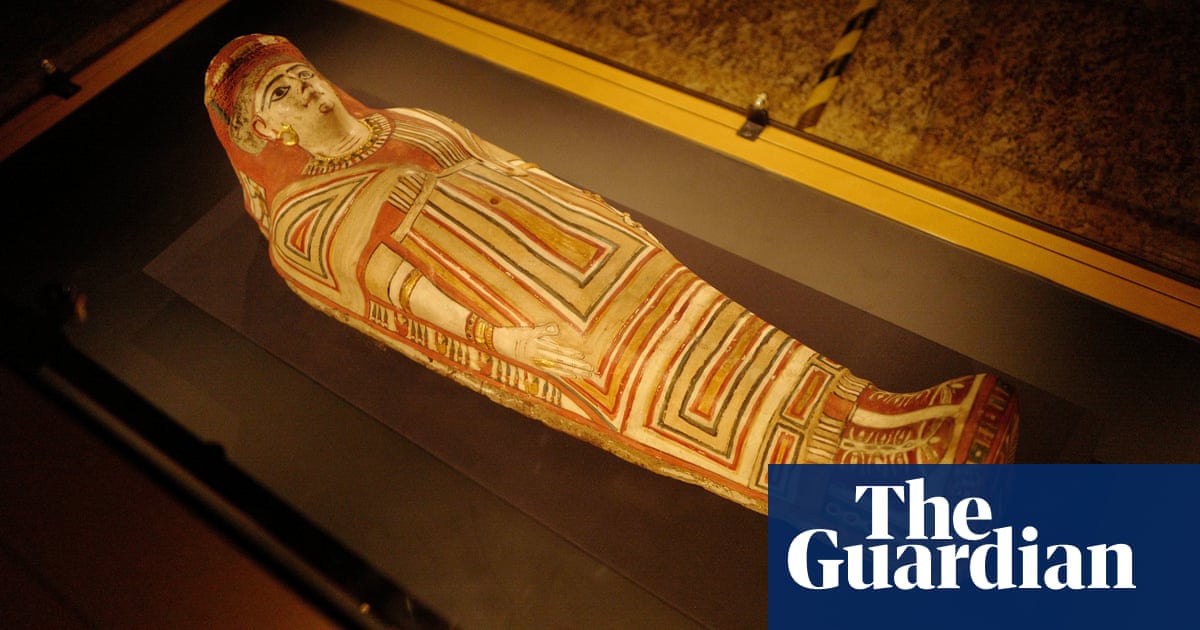Spicy, woody and fantastic: it looks like a abstract of a chic air freshener. But scientists declare the combo of scents emerge from one thing as a substitute varied: mommies.
Researchers have truly made use of each human noses and scientific instruments to penetrate simply how previous Egyptian mommies scent at the moment, and to what diploma the smells mirror the merchandise made use of all through the mummification process.
The idea, they declare, is that scent can present a non-invasive means to judge simply how unspoiled a mommy is, subsequently eliminating the requirement to take examples from the mommy itself.
“From the viewpoint of the heritage scientists working with historic materials, not touching an object and analysing it is really like [the] holy grail,” claimed Prof Matija Strli č, the co-author of the research from the University of Ljubljana and University College London (UCL).
“The other motivation to do this research is to provide curators with [a] synthetic mummy smell, synthetic smell of mummified bodies that they can then use to engage audiences,” he claimed.
Writing within the Journal of the American Chemical Society, Strlič and colleagues reported simply how they examined 9 mommies saved on the Egyptian Museum in Cairo, relationship from the New Kingdom to the Roman length, a length various from concerning 1500BC to round AD500. While some had been lined, others weren’t, with some mommies housed in rock, wooden or terracotta coffins.
The group made use of tiny tubes and pumps to attract out air from round every mommy. Each instance was smelled from a bag by 8 expert specialists, that ranked them for the energy of 13 varied kinds of scent.
While the scents ranged the mommies, they had been normally evaluated to scent satisfying. Among varied different outcomes, 7 of the 9 mommies had been regarded to have a “woody” half to their scent, 6 had a “spicy” half, 5 had a “sweet” side, and three had been regarded to have “incense-like” notes. However some had been evaluated to have a “stale, rancid” half or maybe a moldy scent.
The group after that made use of a system known as fuel chromatography-mass spectrometry-olfactometry to acknowledge the varied non-public unstable substances inside examples. Once separated, these compounds had been likewise smelled by expert specialists.
The group found the overall perfume of the mommies didn’t wanted align with these anticipated from these compounds, highlighting the intricate nature of human scent understanding.
They included that these non-public elements originated from 4 main assets: merchandise made use of all through the mummification process, compounds produced by germs, synthetic chemical substances and repellants, and plant oils made use of in preservation.
While displayed mommies revealed the next array and larger focus necessary than these in space for storing, doubtlessly because of the truth that they had been housed in case, there have been no fixed distinctions based mostly upon the age of the mommies or simply how unspoiled they had been.
Strli č claimed one downside is that a couple of of the plant oils made use of in preservation had been likewise made use of for mummification. He included it will definitely at present curiosity execute evaluations on mommies which have truly not been handled for preservation, maintaining in thoughts these would definitely be anticipated to fluctuate in scent based mostly upon the top of the range of their mummification.
after e-newsletter promo
Dr Cecilia Bembibre, yet another co-author of the job from UCL and among the many expert sniffers, claimed it was each fascinating and a chance to scent the previous.
“Just the idea that you can put your nose to that little tube and smell a mummified body with 3,500 years of history and then, the most surprising thing, still get a whiff of something so incredibly familiar as tea … that was surprising, because some smells were really familiar,” she claimed.
Barbara Huber of the Max Planck Institute of Geoanthropology, that was not related to the job, invited the research but emphasised the scents noticed at the moment aren’t the like these present when the physique was very first mummified.
Huber and coworkers have truly previously acknowledged and recreated the perfume of balms made use of within the mummification of an previous Egyptian noblewoman known as Senetnay, that lived round 1450BC.
“While neither approach can fully recreate the exact fragrance of the past, both bring us closer to understanding how mummies were prepared, what materials were used, and how scent played a role in ancient rituals and beliefs,” she claimed.

